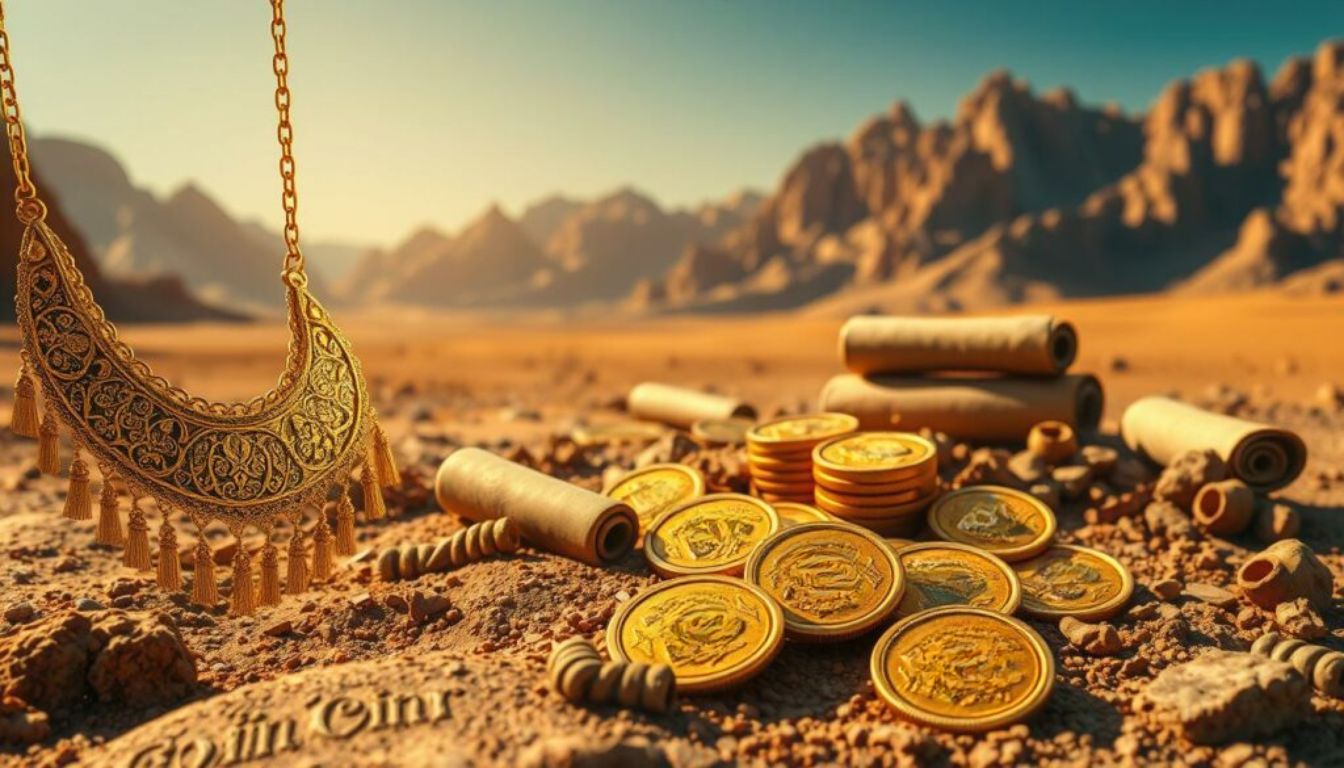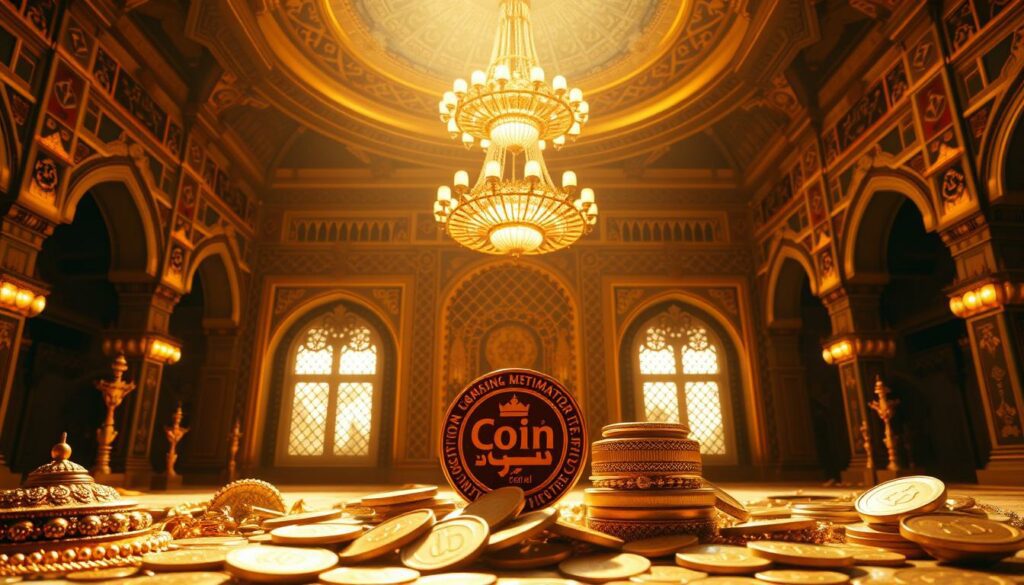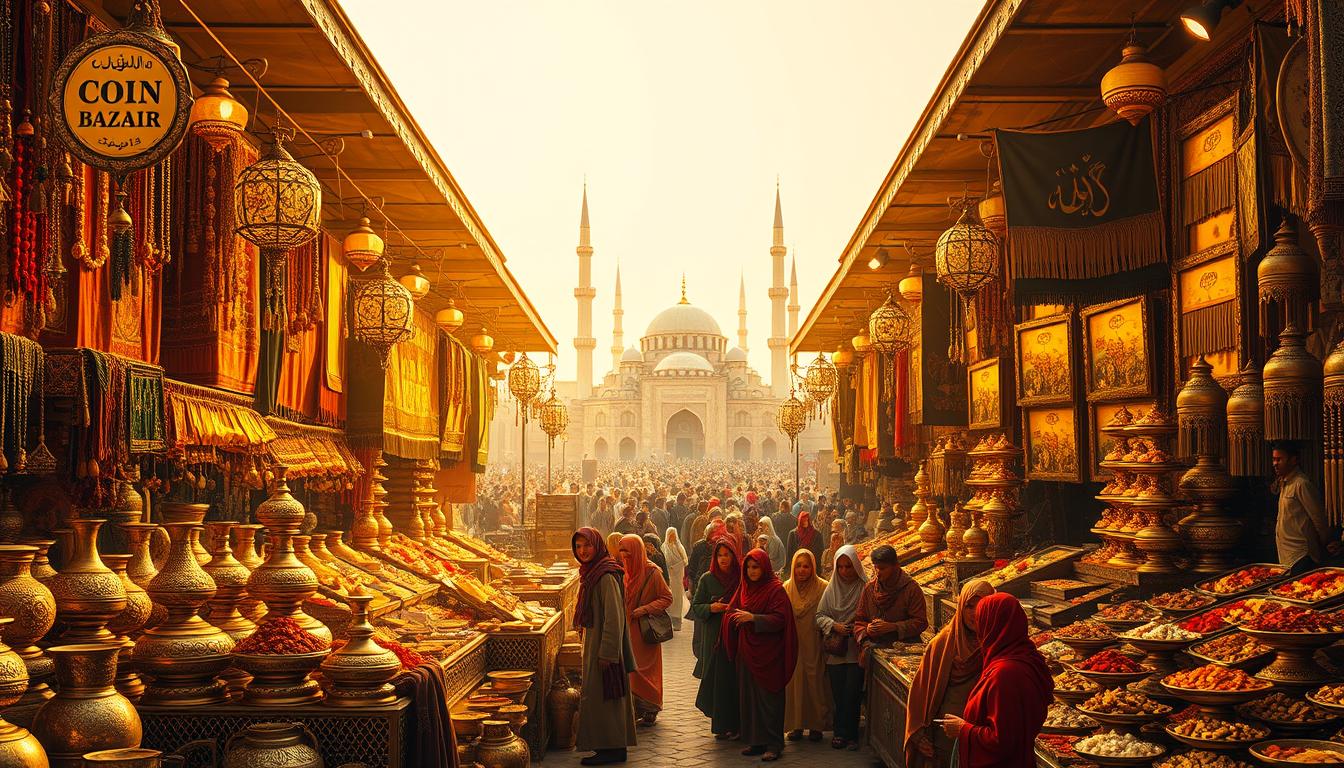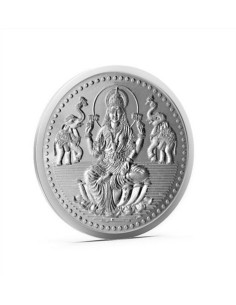Exclusive Deals & Trending Items
Gold is often seen as a symbol of wealth and status. But in Middle Eastern cultures, it means much more. For centuries, gold has been a key part of the region’s cultural heritage. It plays a big role in many customs and practices.
Gold has been important since ancient times. It stands for more than just money. It shows the cultural identity of the people. Exploring gold’s role in traditions reveals its deep historical, cultural, and social value.
Key Takeaways
- Gold is a cornerstone of cultural identity in the region.
- It symbolizes wealth, status, and cultural heritage.
- Gold plays a significant role in various customs and practices.
- The significance of gold extends beyond economic value.
- Understanding gold’s cultural importance provides insight into the region’s traditions.
The Historical Significance of Gold in the Middle East
Exploring gold’s history in the Middle East reveals its deep impact. Gold was key to wealth, power, and identity, guiding civilizations.


Ancient Origins of Gold in the Region
The Middle East’s gold history began with ancient mining. Egypt, with its gold riches, was a mining center. Miners worked hard to find gold, starting its importance in the area.
Gold was prized for its value and in ancient rituals and historical beliefs. It was used in burials and religious items, showing its spiritual and cultural value.
Gold in Early Middle Eastern Civilizations
In early Middle Eastern societies, gold symbolized wealth and power. It was used in jewelry and ornaments. The skill in making these items was high, showing the talent of ancient craftsmen.
| Civilization | Use of Gold | Notable Examples |
|---|---|---|
| Ancient Egypt | Jewelry, Ornaments, Burial Masks | Tutankhamun’s Mask |
| Mesopotamia | Temple Decorations, Royal Jewelry | The Royal Tombs of Ur |
| Persia | Royal Regalia, Coins | The Oxus Treasure |
This table shows how gold was used differently in various cultures. It highlights its role in their beliefs and practices.
Gold as a Symbol in Middle Eastern Traditions
Gold holds deep symbolic meanings in Middle Eastern customs. It’s not just valuable; it stands for prosperity, good fortune, and status in many cultures.


Symbolic Meanings Beyond Monetary Value
Gold’s importance in Middle Eastern traditions is more than its worth. It’s linked to good luck and happiness. For example, giving gold jewelry at key life moments is a tradition. It’s a way to wish the recipient blessings and wealth.
- Gold is used to celebrate weddings, births, and other important occasions.
- It is believed to bring good fortune and ward off evil spirits.
- The type and amount of gold given can signify the giver’s status and wealth.
Cultural Interpretations Across Different Societies
Different Middle Eastern societies view gold in their own ways. For instance, in some places, gold is a sign of wealth and power. In others, it means love and devotion.
- In Gulf countries, gold is often used in elaborate wedding jewelry.
- In Turkey, intricate gold designs are a hallmark of traditional craftsmanship.
- In Iran, gold coins are sometimes given as gifts during Nowruz celebrations.
Understanding these cultural nuances helps us see gold’s role in Middle Eastern traditions. As you delve into the customs and practices around gold, you’ll uncover the rich cultural heritage and customs of the region.
The Religious Importance of Gold
Gold is key in the Middle East’s religious practices, going beyond its value as money. It holds deep spiritual meaning. Gold is deeply connected to the religious traditions of this area.
In many religions, gold adorns sacred objects and spaces. This is true across different faiths in the Middle East.
Gold in Islamic Traditions and Practices
In Islam, gold decorates mosques and religious items. It’s a way to honor the sacred and make religious spaces beautiful. The gold on the Quran shows how much gold is valued.
Gold in Other Middle Eastern Faiths
Gold is also important in other Middle Eastern faiths. For example, in Christianity, gold decorates churches and icons. In Judaism, gold adorns synagogues and ceremonial items.
Religious Restrictions and Permissions
Gold is highly valued but has its limits, especially in Islam. Men wearing gold is forbidden, showing the complex role of gold in religion.
| Faith | Use of Gold | Restrictions |
|---|---|---|
| Islam | Decoration of mosques, religious artifacts | Prohibition on men wearing gold |
| Christianity | Adornment of churches, icons | No specific restrictions mentioned |
| Judaism | Decoration of synagogues, ceremonial objects | Varies by community |
Gold has a complex role in the Middle East’s religions. It shows both its cultural and spiritual importance.
Gold in Traditional Middle Eastern Weddings
Exploring Middle Eastern weddings, you’ll see gold is key. It stands for wealth, prosperity, and luck.
The Mahr and Dowry Traditions
In many Middle Eastern cultures, the Mahr or dowry is vital. The groom gives gold or money to the bride. It shows his commitment and ability to support her.
The Mahr often comes as gold jewelry. The bride wears it on her big day and keeps it. The gold’s value and type vary by region and family wealth.
Wedding Jewelry and Its Significance
Gold jewelry is crucial in Middle Eastern weddings. Brides wear it to attract luck and beauty. It also shows the family’s wealth.
Regional Variations in Bridal Adornments
Each Middle Eastern region has its own jewelry style. Some brides wear big gold necklaces and earrings. Others prefer detailed designs.
Symbolism of Different Jewelry Pieces
Each jewelry piece has its own meaning. A gold necklace might symbolize the couple’s bond. Earrings could represent their hopes for the future.
Gold in these customs highlights the region’s rich culture. It shows the importance of tradition in their lives. Gold is more than a metal; it’s a window into their values and beliefs.
The Art of Middle Eastern Gold Craftsmanship
The art of gold craftsmanship is a big part of Middle Eastern culture. It shows the region’s rich history and skill. If you’re interested in cultural heritage, learning about gold craftsmanship can give you a deeper understanding of the Middle East.
Traditional Techniques and Designs
Gold craftsmanship has been passed down for generations. Filigree and granulation are key methods used to make detailed designs. Filigree is about twisting gold threads into patterns, while granulation is making gold beads to add texture.
Filigree and Granulation Methods
Using filigree and granulation takes a lot of skill and patience. These methods help create complex patterns and motifs that are beautiful and meaningful. Each piece shows the artisan’s hard work and love for their craft.
Pattern Significance in Gold Work
The designs in Middle Eastern gold work have deep meanings. They often symbolize things like prosperity or protection. Knowing these symbols can make you appreciate the craftsmanship and culture even more.
Famous Gold Artisan Centers in the Middle East
The Middle East has many famous places for gold craftsmanship. Cities like Dubai, Istanbul, and Cairo are known for their gold markets. These places offer beautiful gold pieces that show the region’s rich heritage.
Visiting these centers lets you see the craftsmanship up close. It also helps you understand the cultural importance of gold in the Middle East. The art of gold craftsmanship is alive and well, thanks to the hard work of artisans and the cultural values that support them.
Gold in Middle Eastern Architecture
Exploring the Middle East’s architecture, you’ll see gold everywhere. It shows the area’s rich Middle Eastern traditions. Gold has been key in architecture for ages, standing for wealth, power, and spiritual importance.
Dazzling Exteriors: Gold Domes and Minarets
Gold domes and minarets are eye-catching in Middle Eastern buildings. They look great and hold deep historical beliefs and cultural value. The shine of gold in sunlight is thought to link the world to the heavens.
- Gold domes mark mosques as sacred places of worship.
- Minarets, with gold details, show Islamic identity and call people to prayer.
Luxurious Interiors: Decorations and Embellishments
Gold is also big inside these buildings. It’s used in patterns, calligraphy, and ornaments to add luxury and respect. These designs show the cultural and religious values of the area.
Gold decorations also show off the skill of Middle Eastern artists. From mosque walls to palace ceilings, gold adds grandeur and connects to the past.
Middle Eastern Traditions Surrounding Gold Gifting
Gold gifting in the Middle East is more than a sign of love. It’s also a wish for good fortune. For centuries, gold has been key in Middle Eastern customs and traditions. It’s important in many social and cultural events.
Giving gold as a gift means a lot. It shows respect, love, and good wishes. This tradition is big during important life events and celebrations.
Occasions for Gold Gift-Giving
In the Middle East, gold gifting happens on many special days. Weddings, births, and holidays are big ones. At weddings, gold jewelry is given to the bride. It shows the family’s wealth and good luck.
During Eid celebrations, gold coins or jewelry are given to kids and loved ones. It’s a sign of love and luck. The type and value of gold depend on the occasion and the relationship.
| Occasion | Type of Gold Gift | Significance |
|---|---|---|
| Weddings | Gold Jewelry | Symbolizes wealth and prosperity |
| Births | Gold Coins or Jewelry | Signifies good fortune and blessings |
| Holidays (Eid) | Gold Coins or Jewelry | Represents love and prosperity |
The Etiquette and Meaning Behind Gold Gifts
The rules for gold gifts in the Middle East are detailed. The gold’s value and type mean different things. They depend on the event and the relationship between the giver and the receiver.
Gold jewelry with special designs or symbols sends messages. Knowing these customs helps us understand the importance of gold in the Middle East.
In conclusion, gold gifting in the Middle East is full of meaning. It shows the region’s rich culture and values. By learning about gold gift-giving, we can appreciate its cultural significance more.
Gold as Protection: Amulets and Talismans
Gold has been used in amulets and talismans in the Middle East for centuries. People believe it protects against evil and bad luck. This tradition is based on historical beliefs and folklore.
Protective Properties Attributed to Gold
Gold is seen as powerful and protective. In many Middle Eastern cultures, gold jewelry and ornaments are made with symbols and inscriptions. These items are beautiful and carry deep spiritual meaning.
Common Designs and Their Meanings
Gold amulets and talismans come in various designs. Each design has its own special meaning. You’ll find geometric patterns, sacred texts, and symbolic figures.
The Evil Eye and Gold Protection
Gold is believed to protect against the “evil eye.” This is a common superstition in the Middle East. Gold amulets shaped like an eye or with eye motifs are worn to keep negative energies away.
Inscriptions and Their Significance
Gold talismans often have inscriptions from religious texts or sacred phrases. These inscriptions are thought to bring divine protection and blessings. They show how faith and folklore blend in the region’s culture.
| Design Motif | Significance | Cultural Belief |
|---|---|---|
| Geometric Patterns | Symbolize unity and harmony | Believed to bring balance and protection |
| Sacred Texts | Invoke divine protection | Used to ward off evil spirits |
| Evil Eye | Protect against negative energies | Commonly used in jewelry and ornaments |
Gold in Middle Eastern Literature and Poetry
In Middle Eastern poetry and literature, gold is more than a valuable metal. It stands for the depth of human experience. In classical Arabic poetry, gold symbolizes wealth, beauty of language, and human emotion.
Gold Metaphors in Classical Arabic Poetry
Classical Arabic poetry is known for its complex metaphors. Gold is a key symbol for wealth, generosity, and nobility. Poets compare the beloved’s beauty to gold’s shine and value.
This metaphor adds depth to the poetry. It makes the cultural heritage of the region richer.
Gold in Folk Tales and Legends
Gold is also a big part of Middle Eastern folk tales and legends. It stands for good fortune and prosperity. Stories like One Thousand and One Nights are full of gold coins and treasure hunts.
These tales entertain and show gold’s cultural importance. Gold is not just about material wealth. It’s a key part of the region’s cultural identity, found in its literature and folklore.
The Economic Role of Gold in Middle Eastern Society
Gold plays a big role in Middle Eastern cultures. It’s not just for jewelry. Gold is a key part of the economy, helping keep families safe and wealthy.
Gold as Financial Security and Family Wealth
In many Middle Eastern countries, gold is seen as a safe investment. When the economy is shaky, people turn to gold. This tradition of saving in gold is passed down through generations.
Gold is given to children on special days or saved as family wealth. Owning gold is more than just wealth; it’s about securing your family’s future.
Gold Markets and Souks
The Middle East is famous for its lively gold markets and souks. These places are more than just shops; they are cultural centers. Here, you can see the art of gold trading up close.
The souks show the region’s love for gold. It’s a place where traditional practices come alive.
The Art of Gold Negotiation
Negotiating gold prices is an art in the Middle East. Buyers and sellers play a game of give and take. They balance getting a good deal with ensuring the gold is real and of high quality.
This art of negotiation is learned over time. It’s key to doing business in the gold markets.
Authenticity Markers and Quality Standards
The markets have strict rules to ensure gold’s value. Gold is stamped with purity marks. Buyers know these signs well.
Thanks to these checks, the gold you buy is of high quality. The focus on quality and authenticity builds trust in the gold trade.
Understanding Middle Eastern Traditions Through Gold
Exploring the traditions of gold in the Middle East reveals a lot about the region’s values. Gold is more than just a valuable metal; it shows the cultural heritage and beliefs of the area. It symbolizes wealth, status, and power, but also much more.
Gold as a Window into Cultural Values
Gold is a big part of Middle Eastern culture, standing for hospitality, generosity, and success. It’s often given as a gift at weddings and holidays, showing respect and friendship. This shows gold’s importance and the values that are important in these cultures.
Looking at gold in traditional jewelry and ornaments gives us a peek into these values. The designs and patterns mean protection, good luck, and blessings. These items are not just pretty; they carry deep cultural meaning and are passed down through generations.
How Gold Reflects Social Structures
Gold also shows the social structures in Middle Eastern societies. Having gold is linked to wealth and status, shaping social hierarchies. The amount and type of gold someone has can show their place in society. This shows how gold is part of the social fabric, reflecting and sometimes shaping societal norms.
Gold trade and craftsmanship have also shaped the Middle East’s economy and society. Gold souks and markets are more than just places to buy and sell; they are cultural hubs. Through gold, we see how economic, social, and cultural factors interact in the region.
Regional Variations in Gold Traditions
Gold traditions vary greatly across the Middle East. From the Gulf States to North Africa, each region has its own customs and practices. These are shaped by their unique cultures and histories.
Gulf States’ Gold Customs
In the Gulf States, gold is a big part of the culture, especially at weddings and special events. Gold jewelry is seen as more than just decoration. It’s a sign of wealth and a smart investment.
At weddings, gold is given as a dowry. It’s a key part of the bride’s gifts. The amount and quality of gold show the family’s status and generosity.
Levantine Gold Traditions
The Levant, including Lebanon and Syria, has its own gold traditions. Here, designs mix traditional and modern, focusing on detail and craftsmanship. Gold is used in jewelry and decorative items.
In Levantine cultures, gold is linked to luck and prosperity. Gold coins or jewelry are often given at special times like births and weddings. It’s a way to wish the recipient good fortune.
North African Influences
North Africa, with its Berber and Arab roots, adds a unique touch to gold traditions. Gold jewelry here often has special Berber designs. These designs are not only beautiful but also carry deep cultural and symbolic meanings.
Here’s a comparison of the different regional gold traditions:
| Region | Characteristics of Gold Traditions | Significance |
|---|---|---|
| Gulf States | Intricate designs, heavy gold pieces | Symbol of wealth, investment |
| Levant | Blend of traditional and modern styles | Good luck, prosperity |
| North Africa | Unique Berber designs | Cultural and symbolic meanings |
Gold in Modern Middle Eastern Fashion
Exploring modern Middle Eastern fashion, you’ll see gold everywhere. It’s a symbol of heritage and modernity. Gold mixes old designs with new styles, making it a key part of the fashion scene.
Contemporary Jewelry Trends
Modern Middle Eastern jewelry combines old skills with new looks. You’ll find detailed patterns in modern, sleek pieces. Gold is still a big deal, showing status, wealth, and cultural heritage.
Fusion of Traditional and Modern Designs
Gold jewelry in Middle Eastern fashion is all about mixing old and new. Designers use ancient methods in modern pieces. This creates unique items that honor Middle Eastern traditions and attract global fans.
This trend is seen in many gold jewelry items. From bold necklaces to stylish earrings, they all show the region’s rich culture. The modern Middle Eastern fashion scene is a lively mix of history and innovation.
Parallels Between Middle Eastern and Indian Gold Traditions
Exploring the Middle East and India reveals interesting similarities in their gold traditions. Both places value gold greatly. It stands for wealth, prosperity, and their cultural identity.
Shared Cultural Values Around Gold
Gold holds deep meaning in both cultures. It symbolizes prosperity and good luck. It’s used in big life events like weddings and births.
The importance of gold shows their shared history and cultural ties.
Cross-Cultural Influences and Exchanges
Trade routes and cultural exchanges have linked the Middle East and India. Islamic and other cultural practices have shaped their gold traditions. For example, their gold jewelry designs show a mix of local and external influences.
Similar Wedding and Dowry Practices
Gold plays a big role in weddings and dowries in both cultures. It’s a key part of wedding ceremonies, often given as a dowry. This tradition shows the families’ wealth and status.
It also helps secure the bride’s financial future.
Conclusion: The Enduring Legacy of Gold in Middle Eastern Culture
Gold’s importance in Middle Eastern traditions shows its lasting impact on the region’s culture. It’s not just a valuable item; it stands for cultural identity, wealth, and tradition. Gold’s role has been crucial, from ancient times to today, weaving into the cultural fabric.
In Middle Eastern traditions, gold is key in defining the region’s identity. It’s seen in traditional weddings, architecture, and jewelry. The beauty of gold is in the detailed designs and craftsmanship of its artifacts.
The story of gold in Middle Eastern culture is rich and complex. It mirrors the region’s history, values, and traditions. Understanding gold’s significance helps us see its lasting role in the region’s cultural heritage.




















